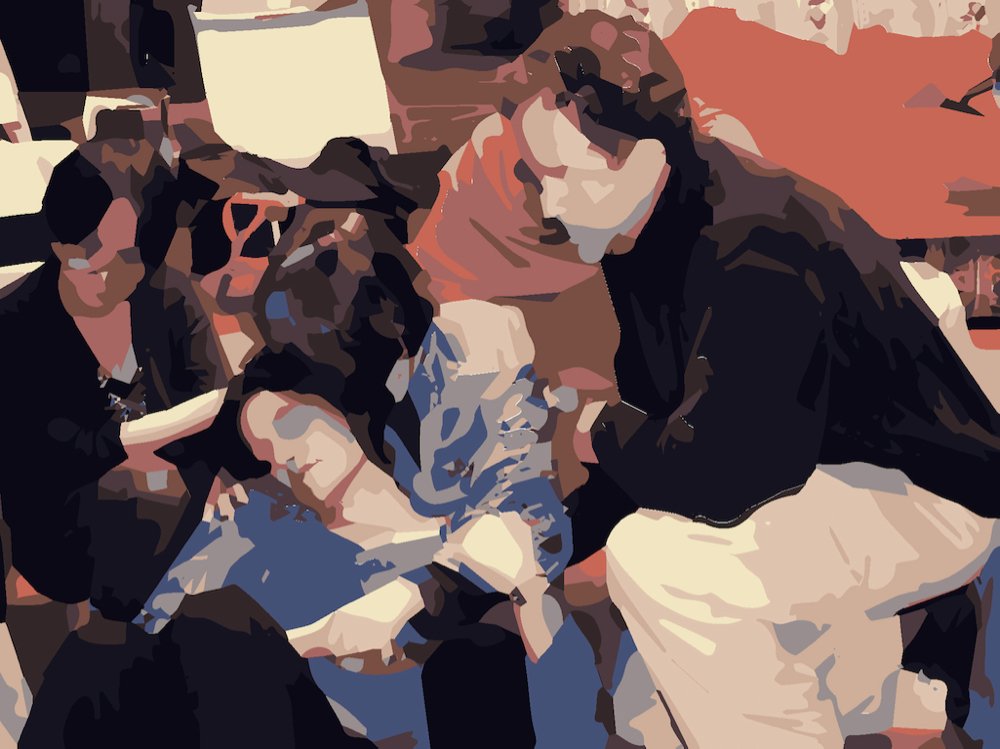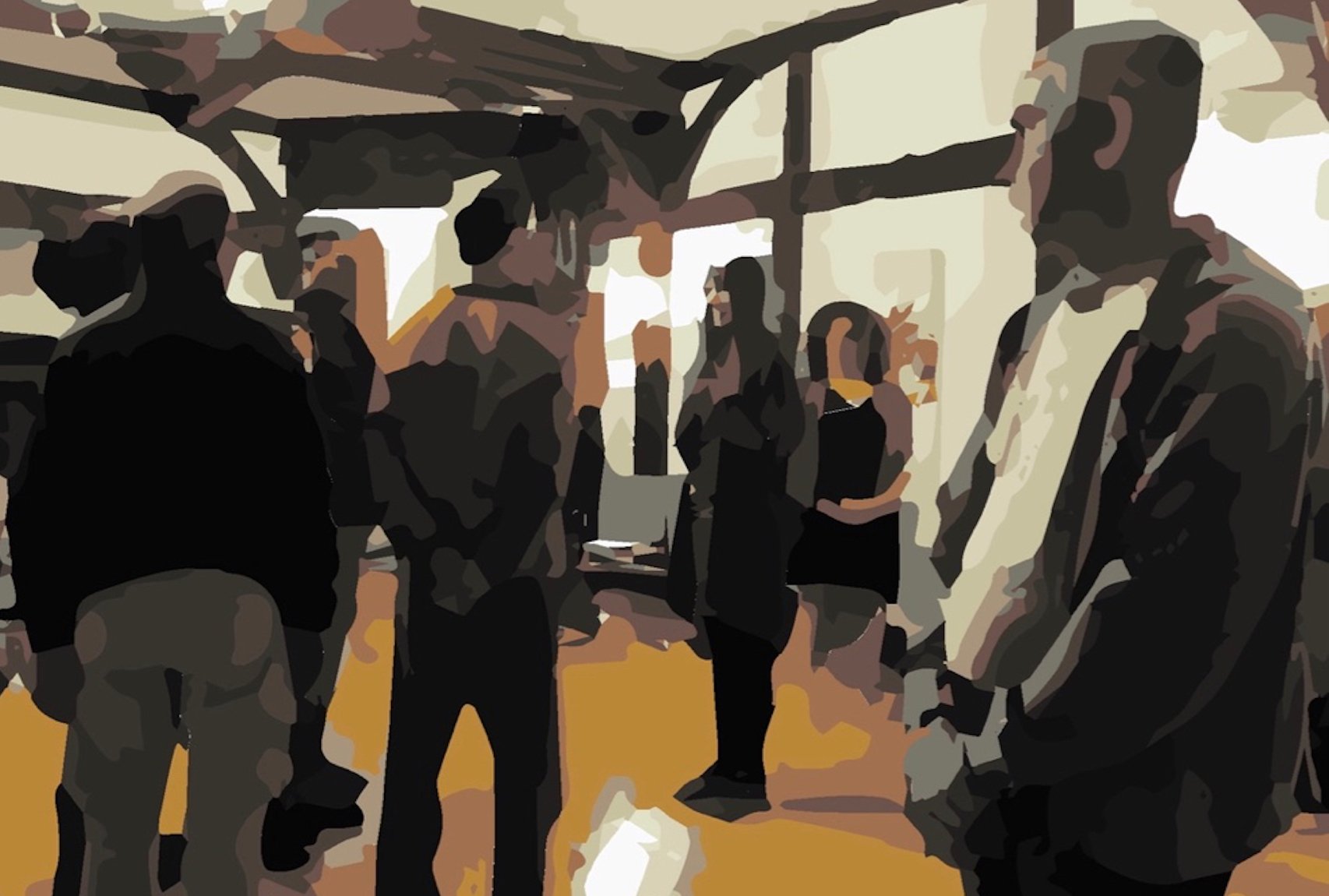Suzi Tucker and Nicolás in dialogue
The Stories We Tell
Nicolás Dumit Estévez: I am drawn to make immigration our first point of reflection in this conversation, not only because of its centrality to One Person at Time, the life and art experience that this publication documents, but also because of the panoply of reactions that the move to leave one’s homeland unfolds for those involved in it directly or indirectly. It was not until recently that I was faced with the deep implications of my departure from the Dominican Republic to New York City almost 30 years ago. At a young age, leaving home represented for me the prospect of expansion at all levels, creatively, culturally, emotionally, and financially. Yet looking carefully at this transition now, I have become aware of the ruptures that it produced. There are those who stayed behind and those who left. There are the latent histories and stories that were truncated before they could be weaved, written, lived or told because of the goodbyes. And even if regular visits to my place of origin were to happen, or if a return for good were to occur, neither I, nor the place I left behind are really the same to each other.
Suzi Tucker: Leaving one’s homeland is perhaps more complex than we commonly understand. When we allow ourselves to acknowledge consequences that need not be at the expense of reasons, we can appreciate more fully not only the power of our own farewells but the power of others’ departures—even for daughters and sons several generations after the leave-taking. In other words, we are affected by the great grandmothers and fathers whether or not we know anything about them, and our own farewells will have ripples beyond what we know. We immigrate in order to find a better life—hoping to find greater financial success or educational, creative, personal opportunity, perhaps, or attempting to escape war, crime, famine, invasion, prejudice. We see the expectant faces of those who are filled with hope and terror and courage. But two deeply embedded threads often remain out of sight even as we carry them to new lands. The first thread is guilt. In our hidden vocabulary is guilt about those who are left behind, about those who did not get to reach for more or to escape despair. The spin of the roulette wheel did not land on them. This subliminal sense of guilt may play out in our not living the life we had envisioned, but rather staying loyal to their circumstances. The second unseen thread: that severing connection with the root system is a dramatic step that sometimes puts us in a precarious position—ungrounded, as it were. To leave one’s place of birth is to pull away from the land, the history, the culture, the content from which we are formed, from our intrinsic belonging. Such a decision should ideally be made deliberately, in an awakened state, with love, respect, and in connection. Unfortunately, the rush toward a better life or from the horrors nipping at our heels often makes such “mindfulness” impossible. Instead, we shift our own fate, and the associated fates of those we leave behind, often without accounting for the tear in the fabric, without it even occurring to us that it might be necessary or useful to mend it.
NDE: In the process of telling one’s life story, the concept of reality usually comes to the surface. My gut feeling is to push this aside because, who is to judge how one perceives and then narrates one’s path through life? Does it matter if something in particular really happened or not, if one believes so and has been shaped by it? Aren’t all stories handed down by one’s families, including mythological narratives, of great relevance to who one is? I compare the situation of reality versus fiction with the myths that have being so pivotal to peoples of the planet from the Taínos/as/es to the Israelites, to the Mayas and the Palestinians, to name just a handful of them. So when it came to the life stories part of One Person at Time, I gave them my unbiased attention; ear facing the narrator and pencil in hand moving along the lined notebook. My job was to listen.
ST: I share this view with you. Memory is an aggressive editor. I listen in this way as well. Perhaps I would call it wide listening. I pay attention to key events, dates, and “facts” because they tend to anchor the narrative. I ask those questions. As a listener, I can sometimes offer context to help the teller release the target from his or her back. I do not diminish the story being told; rather, I invite the teller to enter into the deep landscape of the story, the ecosystem that holds all of the stories. This is often helpful to those who are unconsciously entangled in the suffering of others whether through atoning for perceived misdeeds of the past, sharing in perceived failures of ancestors, compensating for loss, or some other hidden task. I love your last line, especially the image of your ear facing the narrator. For me, this means you are not looking for anything specific from the person and thus you are providing a safe and free space for him or her to tell the tale.
NDE: Belonging is a contested subject these days. Who belongs and who doesn’t? My understanding is that we all strive to be part of something in order to become whole and to attain fulfillment. We belong to families, cultures, religions, towns and cities, nations, organizations and institutions. In terms of the national conversation on belonging as it pertains to the United States, I wonder about the moral repercussions to the soul of a country that grants some people membership in the “family” and that, on the other hand, has excluded, negated, and exiled others.
ST: The United States is, of course, built on exclusion. While such exclusion is certainly not within the sole purview of the United States, it is particularly painful in a country that purports to celebrate diversity and inclusion as core beliefs. As one of the German Family Constellation teachers has observed: The rootless are ruthless. This brings us back to your original question about immigration. Like the original Puritans, who fled their own country of origin, the current Puritans hold that the laws of belonging should be set by one group—white, Christian, heterosexual males. Difference is received as threat. And, in fact, the most potent form of control is to break up belonging, separating people from their land, from their history, mothers and fathers from their children, husbands from wives, siblings from one another. We have seen it a thousand times. We are witness to it now. The phrase “chain migration,” for example, is an attack on belonging. I am an optimistic cynic though. I see a glimmer of slow-moving hope in a large-circle view, which when experienced offers safety and potential that is so much more reliably connected to expanding ways of belonging than to protecting the insular. Protection, after all, limits growth for everyone. The prison holds both the guards and the inmates under lock and key.
NDE: I welcome the opportunity to close this dialogue with a brief discussion on healing sentences. I mention in another part of this publication how, while traveling to New Orleans, writer Eric Bookhardt took me to meet Sister Miriam and how she told me “Thank you for having been born.” Ever since, these words have made me rethink family, belonging, forgiveness, gratitude, acceptance, and how I am called to give attention to others in a way that says, “I see you.” There is a significant amount of love in Sister Miriam’s healing sentence, which makes me reconsider for sure how I treat myself.
ST: I agree, Sister Miriam’s sentence clearly embodies love. It is simple, essential, deeply truthful. It is timeless as well. “Thank you for having been born” holds the past, the present, and the future in its expression. Such sentences, stem or seed, invite us to make contact with a more radical understanding of ourselves. Radical self-love and love for other—from the root. Such sentences are well-springs from which to draw anew. “I see you” is the great gift we give to each other and give to ourselves. It is, in my work, the single most important sentence; moving in the sense not only of touching the heart but of shifting everything. It marks the beginning of all possibility. “I see you” is a bath of light in which the seer and the seen are joined.
Suzi is cofounder of Zeig, Tucker & Theisen, Publishers, with Jeffrey K. Zeig, PhD. Suzi had the good fortune to collaborate with Bert Hellinger, the pioneer of Family Constellations, on most of his titles in English. She is cofounder the Bert Hellinger Institute, USA. Suzi maintains a busy schedule as a presenter, teacher, facilitator, and writer. She is privileged to have served on the guest faculties of the Manhattan College, the NYC Open Center, Kripalu, the Shift Network’s Ancestral Healing Summit, etc. She is looking forward to teaching for the 2023 Western Constellations Intensive, the International Systemic Constellation Conference, and Omega Institute (online and in-person), etc. Suzi is an essayist and a contributor to numerous publications in the fields of psychology and wellbeing, and she is the author of Gather Enough Fireflies.Finally, Suzi is immensely proud to be called “teacher” by some of the most brilliant lights in the Family Constellation field today. Her current classes include two Writing Studios and courses in the Art & Practice of Constellations. She has recently launched Experiential Conversations, an ongoing series of presentations on important life themes, a well as a weekly subscription series called Reflections on the Ordinary Miraculous.
Suzi Tucker / Related links: Website / IG / email / Newsletter / Publication / Publishing Company
Painted Images: Cole Tucker-Walton / Courtesy of Suzi Tucker
The Stories We Tell: Suzi Tucker and Nicolás Dumit Estévez Raful in Dialogue was first published in One Person at a Time, a publication by Nicolás Dumit Estévez Raful with Nilsa De La Luz, Eugene Ballard “Savor”, Santos Cabán, Héctor Enrique Vargas, Blanca Otero, Maritza Viera, Carmen Sosa, Clifford Drepaul, María Bodden, Lucas Iznaga, Antonio Rodríguez Sotomayor, Sidney E. Boone, José Goicuria, Francisco Lugoviña, and Noemí Santana González
Published with Bronx River Art Center (BRAC)
Nicolás Dumit Estevéz Raful communes with a group of seniors, elders and older adults living in council district 18 in the Bronx in one-on-one life and art exchanges. They work together developing written biographic accounts of their lives. This experience is meant to open an introspective space giving participants, including Nicolás, the facilitator, the opportunity to reflect on their accomplishments, challenges, and milestones; including of course relocations, or those of family members, from their places of origin to the Bronx. The actual performance of recording the narratives is done in real time, and in an analog format. Nicolás transcribes the biographies that emerge by way of paper and pencil. Location: The HEART Adult Day Care Center. This project is made possible with public funds through a Cultural Immigrant Initiative grant from Council Member Ritchie Torres of the 15th Council District, as well as support from the New York City Department of Cultural Affairs in partnership with the City Council, the New York Council on the Arts with support from Governor Andrew Cuomo and the New York State Legislature.



